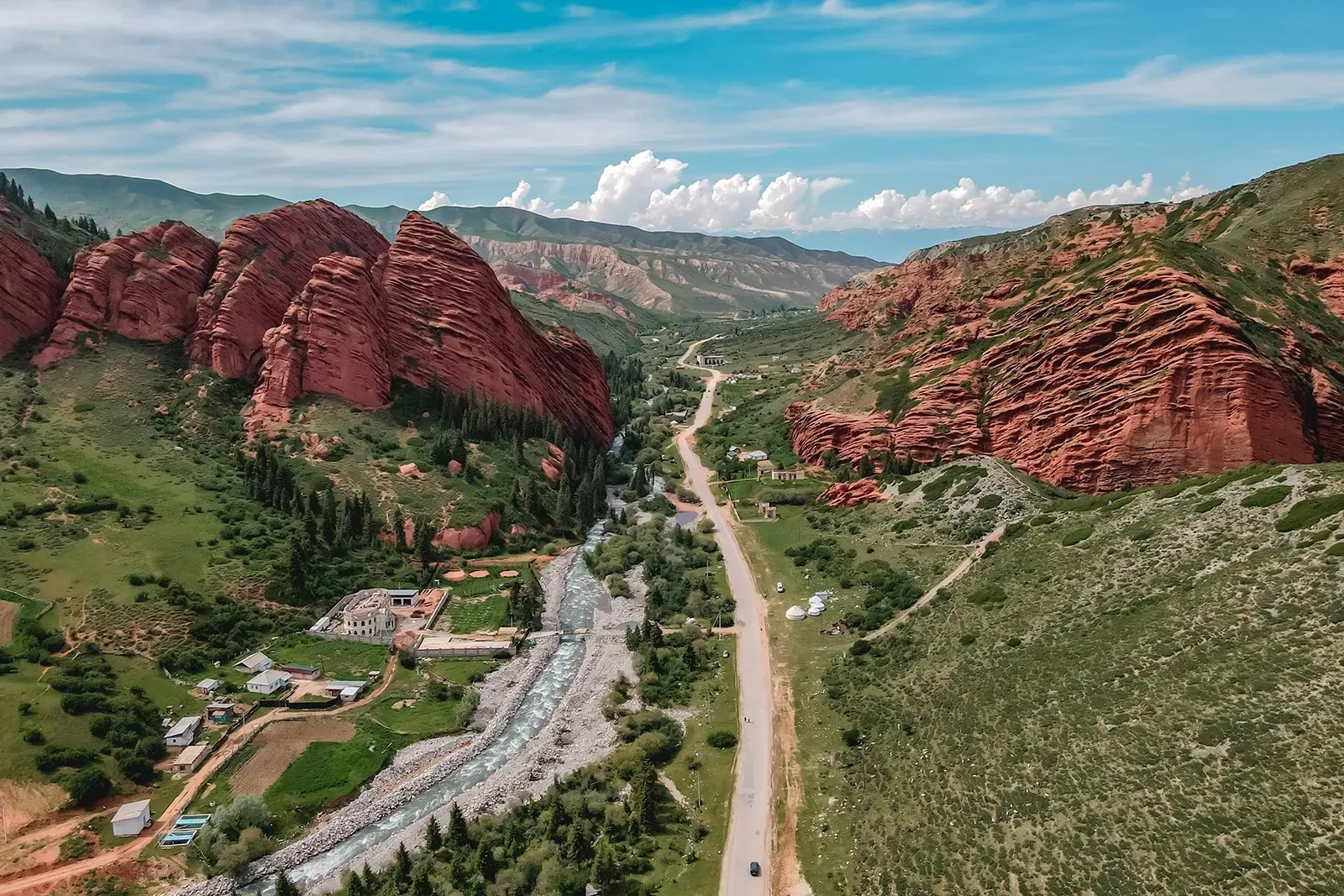Karakol
The city of Karakol is located in the eastern part of the Issyk-Kul region at the foot of the Terskey-Ala-Too ridge in the lower reaches of the Karakol River.
The city of Karakol attracts tourists and climbers with its picturesque mountain landscapes and it’s a key destination for nature and adventure lovers. The city is gaining more and more recognition due to eco-tourism, especially due to its proximity to picturesque valleys and high-altitude lakes such as Ala-Kul. In winter, it attracts visitors to its ski resorts.
Karakol, holds a unique place in the historical narrative of the Silk Road. Karakol and its surrounding region were part of important secondary routes that connected the main Silk Road corridors. The city’s proximity to Lake Issyk-Kul, the Tien Shan Mountains, and the borders of China made it a strategic location for traders, travelers, and nomads along the northern branch of the Silk Road.
Throughout the history, Karakol benefitted from its proximity to this northern trade route, which was a key area where caravans could rest, graze their animals, and resupply before continuing their journeys across Central Asia. The city’s location also made it a gateway for interactions between different cultures, facilitating both economic and cultural exchanges.
While Karakol is now best known for its natural beauty, its connection to the Silk Road adds historical depth to the area. Travelers visiting Karakol can explore remnants of its Silk Road past, particularly in the surrounding Issyk-Kul region, where archaeological sites, ancient burial mounds, and rock carvings (petroglyphs) can still be found. These artifacts suggest that the region was inhabited and frequented by various cultures throughout the Silk Road era.
Today, Karakol’s Silk Road heritage, combined with its natural beauty, makes it an intriguing destination for travelers seeking to explore both the historical and cultural legacies of this ancient trade network.





